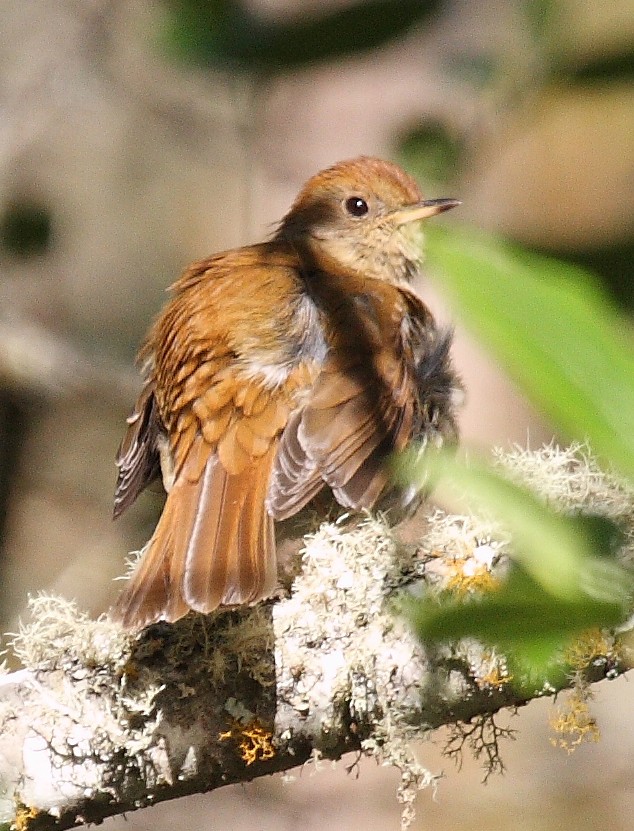Ruddy-capped Nightingale-thrush
A species of American Brown Thrushes and Nightingale-thrushes Scientific name : Catharus frantzii Genus : American Brown Thrushes and Nightingale-thrushes
Ruddy-capped Nightingale-thrush, A species of American Brown Thrushes and Nightingale-thrushes
Botanical name: Catharus frantzii
Genus: American Brown Thrushes and Nightingale-thrushes
Content
Description General Info
 Photo By dominic sherony , used under CC-BY-SA-2.0 /Cropped and compressed from original
Photo By dominic sherony , used under CC-BY-SA-2.0 /Cropped and compressed from original Description
This species is 15–18 cm in length and weighs 28 g. The adult has olive-brown upperparts, a rufous crown and nape, pale grey underparts, becoming whitish on the belly, and an orange lower mandible. The juvenile is darker faced, has pale centres to the upperpart feathers, brownish flanks and breast, and dark barring or spots on the belly. Several poorly defined subspecies have been defined differing in the exact tone of the upper and underpart plumage. This bird's song is a beautiful rich and varied whistle, shee-vee-li-ee-ree, and call is a high thin seet or whooeet. 
Size
18 cm
Nest Placement
Ground
Feeding Habits
Ruddy-capped Nightingale-thrush primarily eats insects and other invertebrates, complementing its diet with berries. It forages on the ground, occasionally consuming small vertebrates and frogs. Ruddy-capped Nightingale-thrush displays unique foraging adaptations for its varied diet.
Habitat
Ruddy-capped Nightingale-thrush generally resides in the understory of wet to semi-humid mountainous regions, characterized by oak and conifer forests, including pine-oak and cloud forests. It is also found in second growth woods, thickets, and areas with forest clearings. Preferred habitats are dense with vegetation, providing ample cover, often in proximity to streams or other water sources. In regions where ruddy-capped Nightingale-thrush coexists with similar species, it may be confined to particularly dense riparian woods within deep canyons.
Dite type
Insectivorous
General Info
Feeding Habits
Bird food type
Behavior
The ruddy-capped nightingale-thrush will normally forage on the forest floor, alone on in pairs, progressing in hops and dashes with frequent stops. It turns leaf litter in typical thrush fashion seeking insects and spiders, and also eats small fruits. The nest is a bulky lined cup constructed 1–4 m high in dense undergrowth or a thicket, often near water. The two brown-blotched greyish or greenish-blue eggs are incubated by the female alone for 15–16 days to hatching, and the young are fed by both parents for 14–16 days more to fledgling. 
Distribution Area
The ruddy-capped nightingale-thrush is a resident breeder in highlands from central Mexico to western Panama. It is found in the undergrowth of wet mountain oak and conifer forests and second growth, typically from about 1350 m to 3500 m altitude. 
Species Status
Not globally threatened.
Scientific Classification
Phylum
Chordates Class
Birds Order
Perching birds Family
Thrushes Species
Ruddy-capped Nightingale-thrush